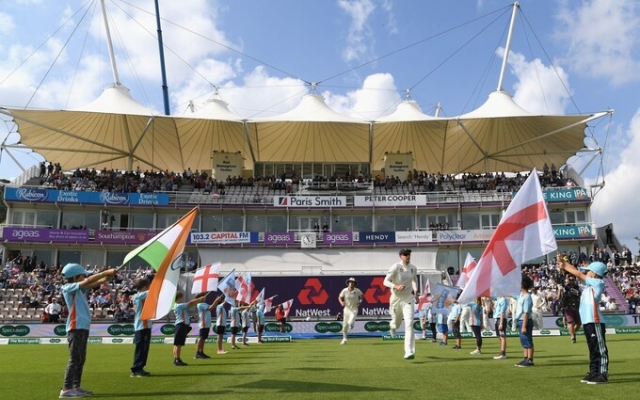 Photo: Getty Images/Stu Forster
Photo: Getty Images/Stu Forster
It is clear why Hampshire is attracting investment from India, and this is not the only case. . Ageas Bowl is a diversified business that includes a golf course, hotel and entertainment facilities, as well as an international cricket ground that will host the Ashes Test in 2027.
It also includes Hundred's successful team, Southern Brave, and is a ticket to a potentially huge windfall if the shares are sold competitively. How this process will work is yet to be decided, but it is believed that the Hundred's owners will receive a 50 per cent stake in the franchise, which can either be sold or retained (the England and Wales Cricket Board will retain the remaining 50 per cent). This makes these clubs attractive investment opportunities after years of being saddled with debt.
A hundred counties are sitting on a pot of money and the value of Lord's, the Oval, Edgbaston, Old Trafford and even Headingley. Despite Yorkshire's current problems, they will eclipse Hampshire as their names resonate throughout the cricketing world.
Rod Bransgrove's obvious advantage in negotiations with the Delhi Capitals co-owners is that Hampshire is not owned by their members.
p>
There is a nimbleness in Hampshire that others don't like as Bransgrove holds onto power as the majority owner. Durham and Northamptonshire are the only two of the 18 counties that are no longer member-owned clubs. Tim Bostock, Durham's chief executive, is confident his club can host The Hundred if the competition expands and hopes to attract Saudi investment and leverage its links with Newcastle United. Durham has re-emerged in recent years and is a business that can grow rapidly in times of investment opportunity.
County membership has declined in recent years, but remains a force in the game. It was the backlash from members and the pressure they put on county chairs that rejected the changes to the championship recommended 18 months ago in Sir Andrew Strauss' high performance review.
 County cricket tends to be poorly attended, especially in red-ball games. Photo: Getty Images/Naomi Baker
County cricket tends to be poorly attended, especially in red-ball games. Photo: Getty Images/Naomi Baker
In recent years, county members have been encouraged by the Cricket Supporters' Association and individual clubs, most vocally led by the Lancashire Action. A group that has been in a bitter battle with the club's board over a number of issues.
Members generally want to protect red-ball cricket and are skeptical of outside investment. The 18 clubs, not including MCC, have approximately 75,000 members. It is being inflated on the testing grounds by those who use memberships to buy international tickets, and without this appeal some smaller clubs will struggle to reach four-figure membership numbers.
Most members consider themselves season ticket holders, a small but active group who consider themselves the owners and guardians of the club they support. The fact that relatively minor (compared to private ownership) changes to the championship have met with such resistance within 18 months suggests that the battle for the Hundred will be difficult.
«It's not easy, most counties belong to a relatively modest number of members, some of whom want cricket to be what it was, it will never be the same,» Gordon Hollins, the outgoing chief executive, recently told Telegraph Sport Somerset.
But finances bite. Yorkshire are believed to be one of four clubs given an advance by the ECB to get them through the winter. On average, counties rely on the ECB for 47 percent of their revenue, with this figure rising to 60 percent in some countries. Given the ECB's fixed broadcast money until 2028 and the huge cost of implementing the recommendations of the Independent Cricket Equality Commission report which were not budgeted for, as well as rising cricket inflation (player salaries and ground investment), the game is in desperate need of new money. . The ECB cannot afford to support clubs and the membership model will come under scrutiny like never before.
Bransgrove can do his own thing and if he sells his stake in Hampshire he will leave the club in the unimaginable position it was in when he took over in the 1990s. He did a great job of raising them alongside the existing Test grounds, bringing Hampshire back from the brink of bankruptcy, building a new ground that took time and patience to develop, and recognizing the need for the club to move away from cricket as an income.
There were many difficult times along the way, and Bransgrove was not always in the ECB's favor, especially when it was led by Giles Clarke.
Bransgrove was one of them. one of the first in English cricket to recognize the potential of the Indian Premier League, and this made him enemies at the time. There was a short-lived alliance with the Rajasthan royal family from 2010-2013 that, in retrospect, was ahead of its time.
For Bransgrove to turn Hampshire into a £100 million asset is remarkable entrepreneurship. and symbolizes times of change in cricket.



















































Свежие комментарии